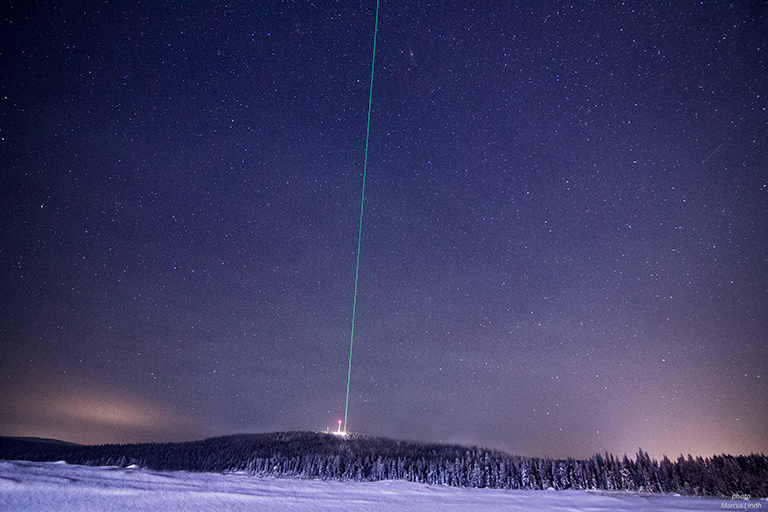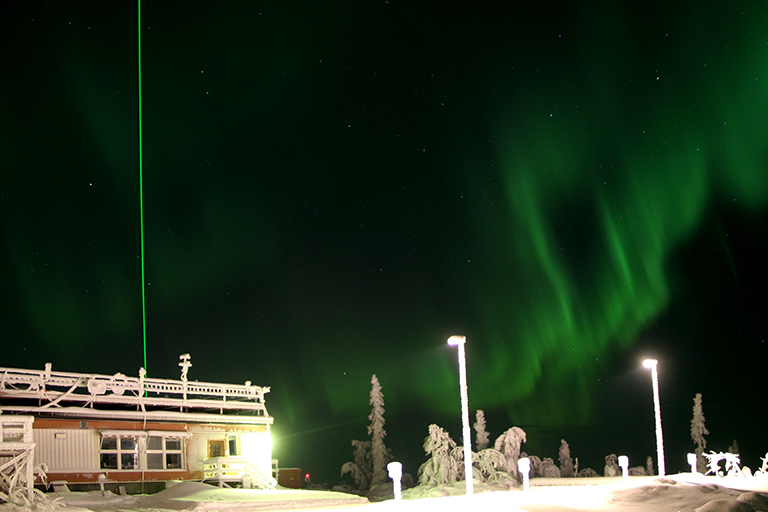High-end ground-based instruments
SSC provides possibilities for customers to place ground instruments at Esrange Space Center, or on other SSC sites around the globe.
At Esrange, SSC offers access to high-end ground-based instruments for standalone or coordinated measurements using sounding rockets, balloons, and satellites.
Examples of ground-based instruments available at Esrange are ESRAD atmospheric radar, Flux-gate magnetometer, photometer, riometers, Faraday experiment transmitters, night sky cameras, Lidar, and meteor radar.
SSC also offers meteorological soundings with possibilities for ozone measurement.
Photo: Marcus Lindh, SSC

Ground-based scientific instruments at Esrange

- Flux-gate magnetometer A continuously operated 3-axis flux-gate magnetometer measuring variations in the Earth magnetic field up to ±8000 nT (accuracy ±1 nT). Data is archived on a local server, available at the Esrange EGiS web site.
- Photometer A four channel photometer at 427.8 nm, 486.1 nm, 557.7 nm and 630.0 nm for optical studies of the aurora. Data is archived on a local server, available at the Esrange EGiS web site.
- Riometers Two continuously operated riometers for studies of ionospheric phenomena. Data is archived on a local server, available at the Esrange EGiS web site.
- Faraday experiment transmitters Four remotely controlled 1kW transmitters at 1300, 2200, 3883 and 7800 kHz. These are normally used with a receiver in a sounding rocket, to measure electron density in the ionosphere.
- ESRAD, scientific radar A continuously operated 52MHz radar for studying atmospheric phenomena in the mesosphere, stratosphere and troposphere.
- LIDAR 20 Hz Nd:YAG LIDAR system installed on Radar Hill; owned by SSC and operated by scientists from MISU. The system is equipped with detectors for Rayleigh/Mie scattering @ 1064 nm, 532 nm and 355 nm; vibrational and rotational Raman scattering. The output power is 18 W @ 532 nm and 36 W @ 1064 nm.
- Night sky cameras A set of remotely controlled night sky cameras for studies of the aurora borealis
- SKiYMET, meteor radar The All-Sky Interferometric Meteor Radar is continuously operated at 32.5MHz.
Meteorological soundings
A meteorological sounding system is used for balloon-borne measurements with radio- and ozone sondes.
Information about the atmospheric conditions like pressure, temperature, wind, ozone concentration and balloon position are collected and often used as launch criteria for sounding rockets and stratospheric balloons.
EGiS - Esrange Geophysical information Services
Additional information like telemetry and trajectory data can be included in the product.
Please contact us for further information and access to EGIS. Go to the contact form.

Henrik Pettersson
Executive Vice President of Business Development, Science Services
